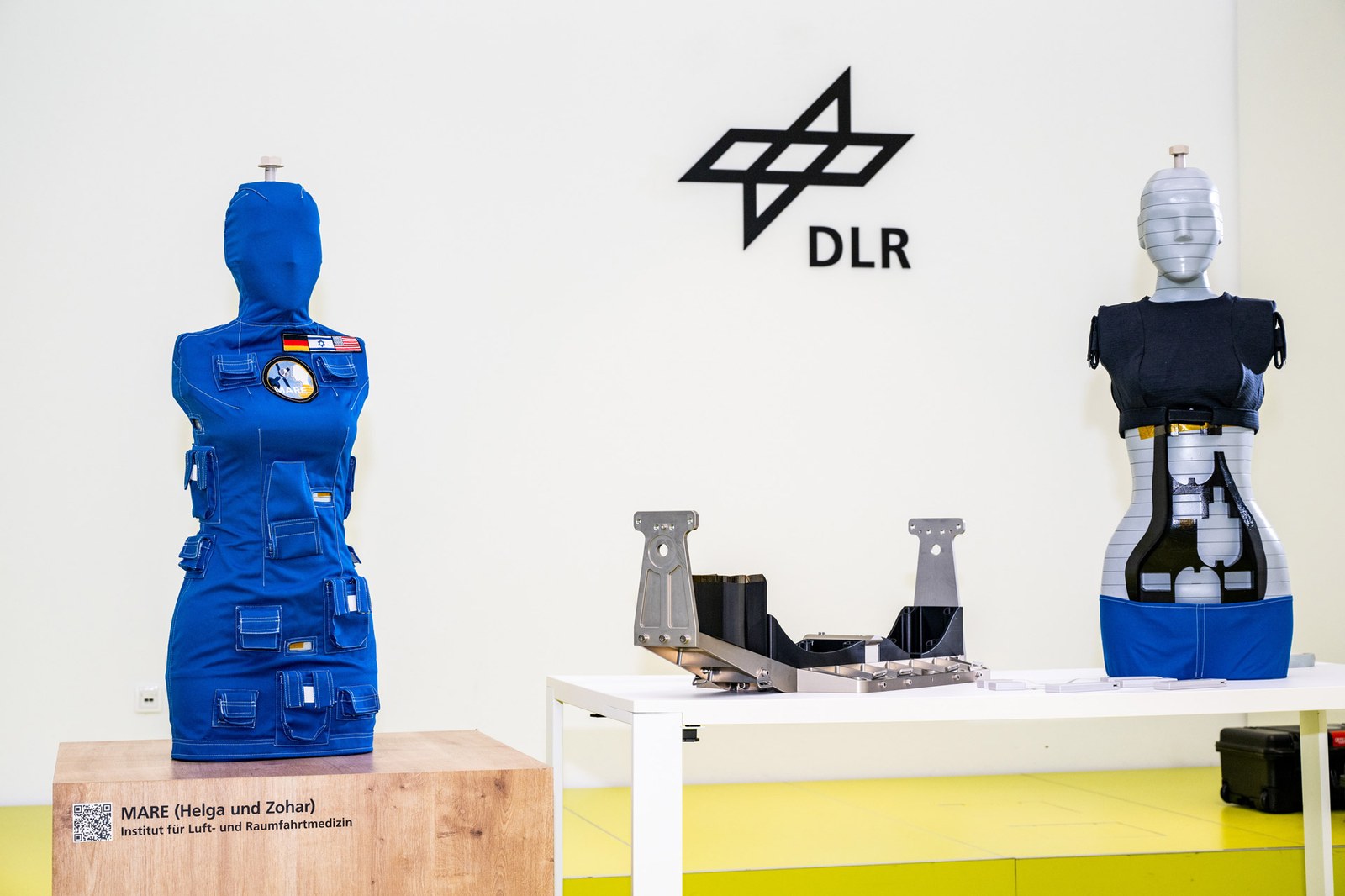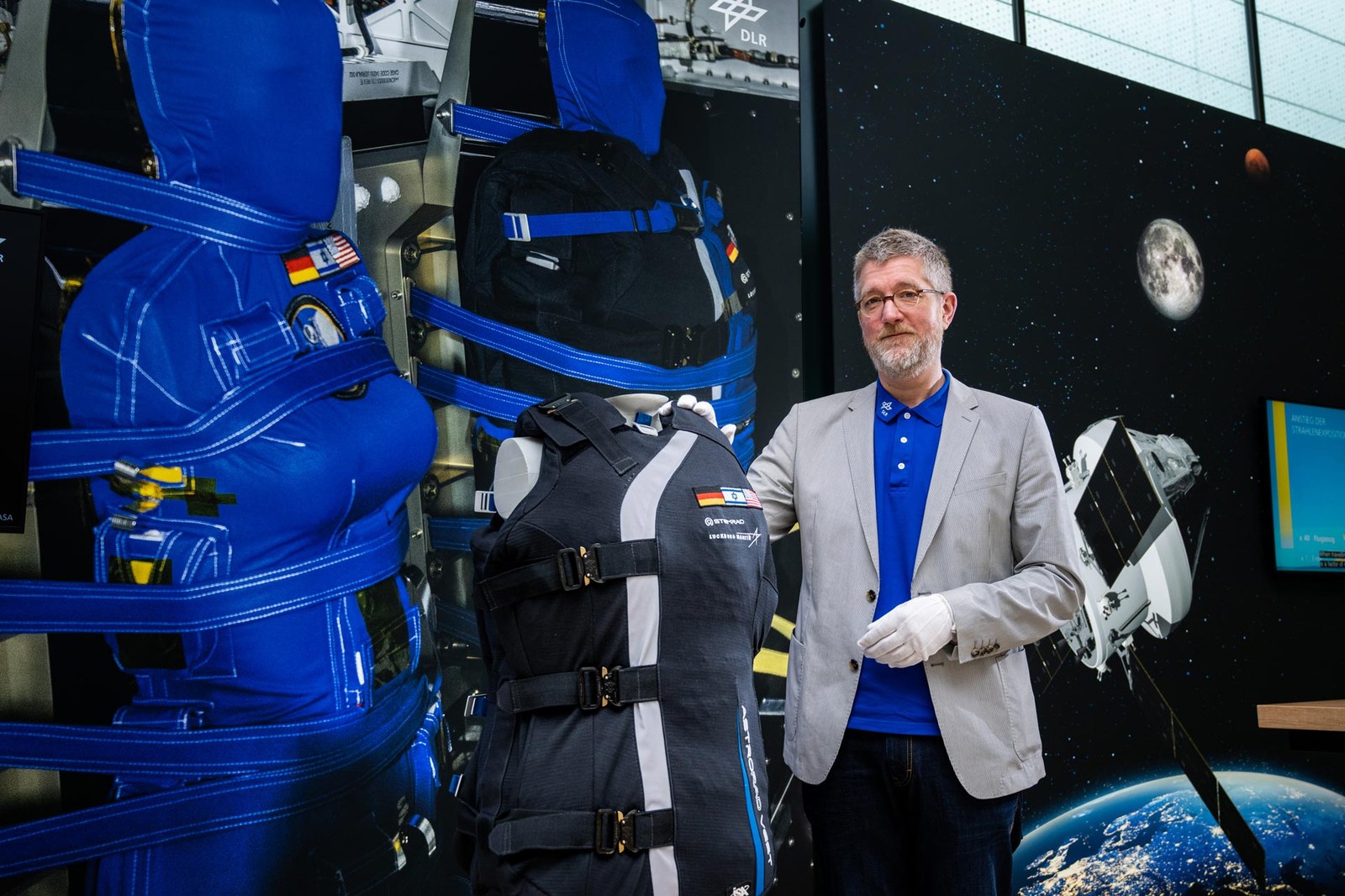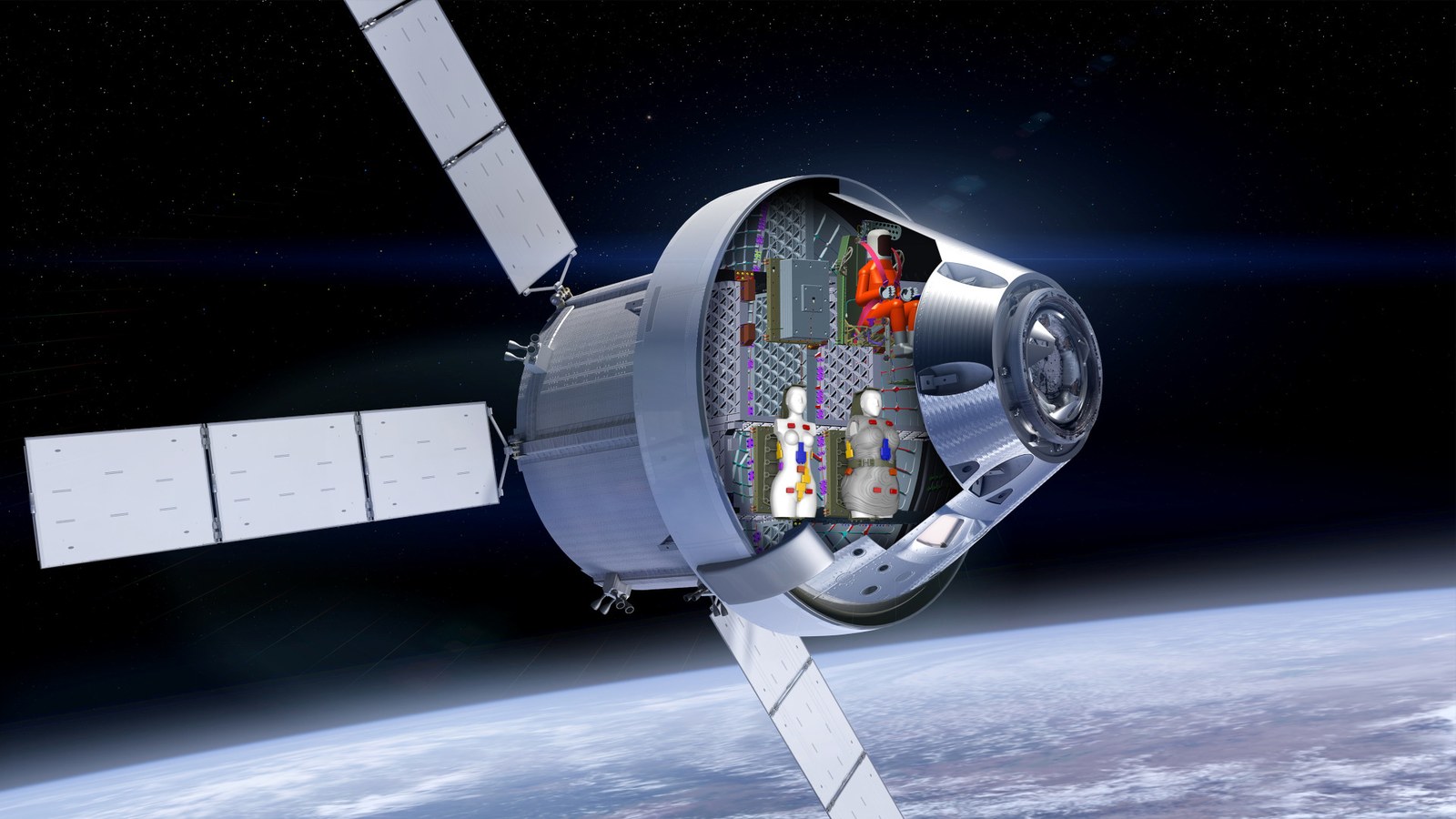The first of a new generation of lunar 'astronauts' return to Cologne



- Radiation exposure is one of the main unsolved medical challenges of human spaceflight.
- The MARE project will provide a three-dimensional image of the radiation exposure experienced by the female body during a flight to the Moon and back.
- Helga and Zohar have now returned to DLR in Cologne, where a detailed evaluation of the data acquired can now begin.
- The results will assist the development of appropriate protective measures for future long-term human spaceflight missions.
- Focus: Spaceflight, exploration, medicine, radiation protection
Following their historical journey around the Moon as part of NASA's Artemis I mission, the radiation-measuring mannequins, Helga and Zohar, are back in Cologne. On 9 March 2023, the two female astronaut phantoms were presented to the media by the German Aerospace Center (Deutsches Zentrum für Luft- und Raumfahrt; DLR) at its Institute of Aerospace Medicine for the first time since their flight. Once evaluated, the data from the Matroshka AstroRad Radiation Experiment (MARE) project, led by DLR, will provide a three-dimensional image of the radiation exposure of the female body during a flight to the Moon and back. The research results will also be used for terrestrial applications.
"Human spaceflight is developing rapidly. In the future, there will likely be commercial space stations built in low-Earth orbits on which people will work and conduct research. At the same time, astronautical exploration to the Moon and beyond will increase," says Anke Kaysser-Pyzalla, Chair of the DLR Executive Board. "Radiation exposure is one of the main unsolved medical challenges of human spaceflight. We need to understand it more precisely to develop effective measures to protect humans in space. This is where the MARE project has done pioneering work as part of the Artemis I lunar mission, with a particular focus on future lunar astronauts."
Analysed piece by piece
The handover of the two measurement mannequins at NASA's Kennedy Space Center in January included a preliminary check of the battery-powered measurement instruments. "The active radiation detectors have delivered consistent, high-quality data," reports Thomas Berger, head of the MARE experiment at the DLR Institute of Aerospace Medicine. "At the DLR Institute in Cologne, we will now begin the evaluation of the more than 12,000 passive radiation detectors made of small crystals located throughout the two measuring bodies. Reading out the information stored by the crystals creates a three-dimensional image of the human body that reveals the overall radiation exposure experienced by bones and organs during a flight to the Moon and back. "We will now dismantle the mannequins and remove the passive radiation sensors in each 'slice'," Berger explains the procedure. "We will then begin examining and evaluating the information stored within the individual crystals using the laboratory equipment here at DLR."
The two phantoms were modelled on female bodies, including reproductive organs, in order to measure the radiation dose in particularly radiation-sensitive organs. The female astronaut phantoms each consist of 38 discs, are 95 centimetres tall, weigh 36 kilograms and contain organs and bones made of plastic of varying density.
A vest for radiation protection

NASA
The study is also investigating the effectiveness of the shielding provided by the radiation vest worn by Zohar. Zohar, provided by the Israel Space Agency (ISA), weighs 62 kilograms when equipped with the AstroRad radiation vest, which was made by the Israeli company StemRad. "We will see how effective the shielding effect was by comparing the radiation exposure of Helga, who wore no vest, and Zohar, who was equipped with the protective vest," Berger explains.
The extensive evaluation of the data will now take several months. Detailed results are expected by the beginning of next year. "We can already see that some of our assumptions about radiation exposure during lunar travel are confirmed," says Berger. "Now that we have access to all of the available measurement data, we can begin to draw more detailed conclusions."
The transfer of the research results to terrestrial applications is already foreseen. A predecessor project to MARE has already led to a 'spin-off' at DLR. In this project, a phantom named Matroshka was exposed to space radiation outside the International Space Station ISS for one and a half years starting in 2004. It then spent another three years inside the space station. A twin of the Matroshka phantom was used in fundamental cancer therapy research in collaboration with GSI in Darmstadt, Germany. Research has also been carried out together with StemRad, which developed the AstroRad vest in cooperation with Lockheed Martin, regarding the application and safety of the technology for X-Ray Protection Equipment used by radiologists and their colleagues in hospitals. This research is primarily aimed at assisting the development of improved protective clothing for surgeons for use during routine diagnostics and longer, complicated procedures.
Forward to the Moon with Artemis
Artemis I is the first in a series of missions in NASA's Artemis programme. The programme envisions landing humans on Earth's natural satellite again after more than 50 years, establishing a permanent base there together with international partners and building a space station in lunar orbit from which humans can set off for more distant destinations, such as Mars. Artemis I is the first step on this journey. This uncrewed mission will test all the newly developed systems and how they interact – the Orion spacecraft, the European Service Module (ESM), the Space Launch System (SLS) heavy-lift rocket and the ground systems. The safety of the astronauts is the top priority. This includes, in particular, protection against cosmic radiation, which is many times higher in space than on Earth – around 800 times higher on the Moon. In order to be able to take suitable protective measures for long-term missions in the future, we need to know the radiation exposure precisely. This is being researched as part of Artemis I with the MARE experiment.
The MARE experiment
The German Aerospace Center (DLR) is leading the MARE experiment. The main project partners are the Israel Space Agency (ISA), the Israeli industrial partner StemRad, which developed the AstroRad protective waistcoat, Lockheed Martin and NASA. MARE, in its complexity and in its international collaboration with numerous universities and research institutions from Europe, Japan and the USA, represents the largest experiment to determine radiation exposure for astronauts that has ever left low-Earth orbit. More than 25 days in space now lie behind the #LunaTwins, during which they flew to the Moon, orbited it and then returned to Earth. The measurements taken during Artemis I will provide valuable risk data for risk assessment and mitigation for future exploration missions.
